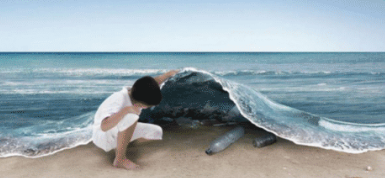Lifesaving water
A report by Kate Ellis, environmental campaigner
In December 2004, Michael Pritchard was shocked by the Indian Ocean tsunami, which affected 18 countries, and left ......................................(1) homeless. He saw people after the tsunami who were surrounded by polluted water that they couldn’t drink. Eight months later, Hurricane Katrina hit New Orleans in the USA. There was the same problem with polluted water, and the richest country in the world had to provide huge numbers of bottles of drinking water. Michael Pritchard decided to do something about producing clean water without using plastic bottles. The worldwide use of bottled water is extremely wasteful. Annually, we drink ............................................( 2 ) of water, and three times the amount of water in each bottle is used in its manufacture. Then there is the amount of oil used to produce and transport the bottles. We shouldn’t have got into a situation where people all over the world have no clean drin ki ng water. Michael’s idea was to find a way to get clean, sterile drinking water from polluted water. The usual way involves the use of water - purifying tablets, which often contain chlorine. They are costly and affect the taste of the water. So Michael in vented the Lifesaver bottle. You f ill it with dirty water, close it and then pump air into it by hand. The air forces the water through a very small filter (with holes 15 nanometres wide), which gets rid of viruses and bacteria, as well as dirt. Unhealthy water in, clean water out! And the water is free, although you need to get a new filter after ............................................( 3 ) . Not surprisingly, Lifesaver bottles and larger containers have been successful, not only with aid agencies after disasters and with the army, but also with hikers and campers. We waited so long for such a simple way to save lives – and money. (A dapted from New Inspiration, Level 3, Resources, Extended Reading Texts )

